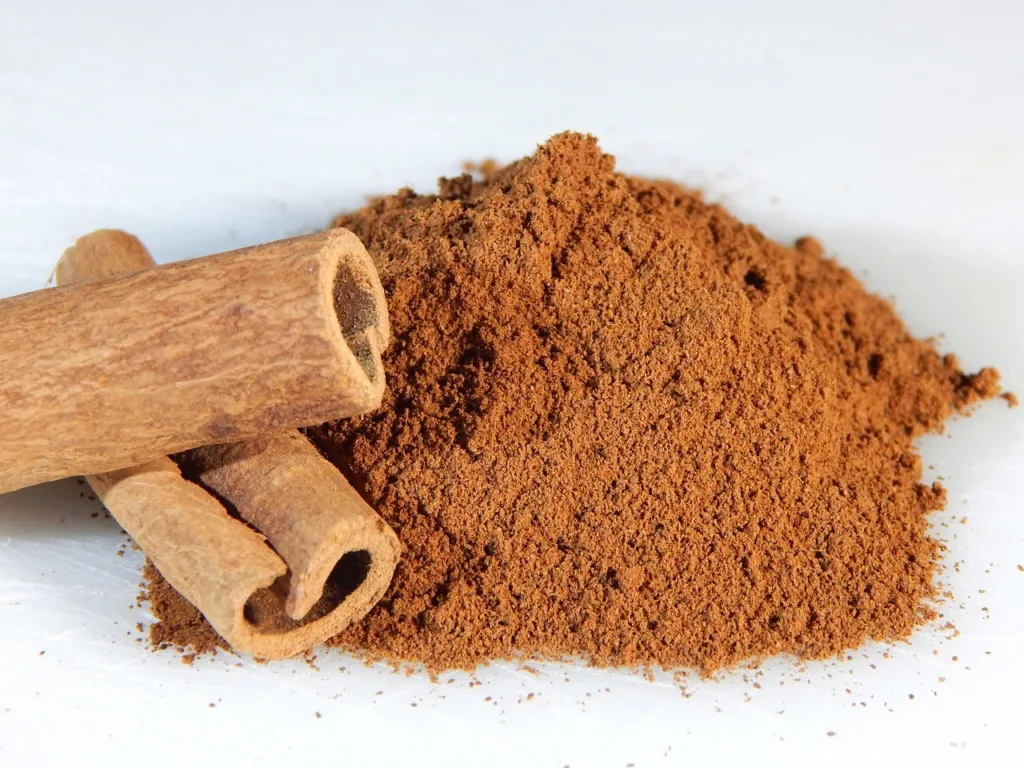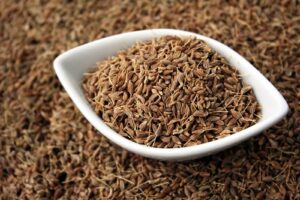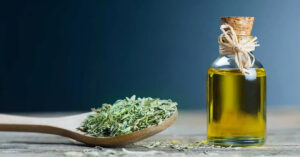Cinnamon is a beloved spice known for its warm and sweet aroma, as well as its numerous health benefits. This article will delve into the rich history of cinnamon, exploring its origin, various types, composition, global production, and the incredible advantages it offers for our well-being. We will also discuss the appropriate dosage, different ways to consume cinnamon, how to obtain it, possible side effects, and precautions to be aware of. So, grab a cup of tea and join us on this aromatic journey through the captivating world of cinnamon.

Origin and History of Cinnamon
Cinnamon, the warm and enticing spice, boasts a history as rich and layered as its flavor. Its aromatic journey takes us back millennia, traversing ancient trade routes and weaving tales of empires, explorers, and the insatiable human desire for exotic tastes.
The earliest whispers of cinnamon’s story can be traced back to Sri Lanka, around 2000 BC. In ancient Sanskrit texts, it finds mention as “tvak”, revered for its medicinal properties and used in religious ceremonies. Egyptians valued it as a precious offering for their pharaohs, embalming bodies with its heady scent. By the 1st century AD, cinnamon had captivated the Roman palate, becoming a symbol of luxury and wealth, fetching exorbitant prices due to its rarity.
The quest for this coveted spice fueled exploration and ignited rivalries. Arab traders fiercely controlled the cinnamon trade, carefully guarding the source of this “burning bark” as a closely held secret. Intrepid explorers like the Greek explorer Diogenes attempted to unravel the mystery, venturing into the perilous Arabian Sea. Legend even recounts the fantastical tale of giant, bird-like creatures guarding the cinnamon trees, adding to the allure of this mythical spice.
As trade routes evolved, cinnamon’s aroma wafted to new shores. By the Middle Ages, it had become a prized possession in Europe, used not only in culinary delights but also in medicines, perfumes, and even as a preservative. Venetian merchants, seeking to break the Arab monopoly, embarked on daring voyages to discover the source themselves. By the 15th century, Portuguese explorer Vasco da Gama finally reached its origin in Sri Lanka, forever altering the spice trade landscape.
Today, cinnamon is grown in various regions, including Indonesia, China, Vietnam, and the Caribbean. While Sri Lankan cinnamon remains prized for its delicate flavor and complex aroma, each region offers its own unique taste nuances. This journey from ancient Sri Lankan forests to global kitchens speaks volumes about the enduring allure of this versatile spice.
Beyond its culinary uses, cinnamon continues to hold cultural significance. In India, it symbolizes auspiciousness and is used in traditional ceremonies. In Mexico, hot chocolate infused with cinnamon warms festive celebrations. And in many cultures across the globe, its sweet, spicy scent evokes memories of home and comfort.
So, the next time you sprinkle a dash of cinnamon into your coffee or savor a cinnamon bun, remember its incredible journey. It’s a taste of history, a legacy of exploration, and a testament to the universal appeal of this warming, fragrant spice.
Cinnamon has a history of thousands of years and one which is full of stories. It was highly prized in ancient civilizations for its medicinal properties, as well as its exotic flavor. The origins of cinnamon can be traced to the tropical regions of Southeast Asia, particularly Sri Lanka and India. The spice was so highly valued that it was even mentioned in ancient texts such as the Bible and the Egyptian Ebers Papyrus.
Different Types of Cinnamon
There are several types of cinnamon available, each with its own unique characteristics. The most common types include:
1. Ceylon Cinnamon (Cinnamomum verum): Also known as “true cinnamon,” Ceylon cinnamon is considered to be the highest quality variety. It has a delicate and slightly sweet flavor.
2. Cassia Cinnamon (Cinnamomum aromaticum): Cassia cinnamon is more readily available and less expensive than Ceylon cinnamon. Its taste is stronger and more poerful.
3. Saigon Cinnamon (Cinnamomum loureiroi): Saigon cinnamon is prized for its strong and bold flavor. It is primarily cultivated in Vietnam.
4. Indonesian Cinnamon (Cinnamomum burmannii): This type of cinnamon is commonly used in commercial food production due to its affordable price and strong flavor.
Composition and Nutritional Value
The magic of cinnamon lies in its intricate composition. The two main types, Ceylon cinnamon and Cassia cinnamon, boast slightly different chemical profiles. Ceylon cinnamon, known for its delicate sweetness and subtle warmth, owes its signature flavor to an aromatic compound called cinnamaldehyde. This potent oil comprises about 60-70% of Ceylon cinnamon and is responsible for its distinctive scent and taste. Cassia cinnamon, the more common and robust variety, possesses higher levels of cinnamaldehyde (80-90%) and a stronger, sharper flavor. Both types also contain eugenol, an antioxidant and a contributor to the warming sensation associated with cinnamon.
Cinnamon Nutritional Composition per 100 grams (3.5 oz)
| Nutrient | Amount |
|---|---|
| Calories | 245 |
| Fat | 0.74 g |
| * Saturated fat | 0.1 g |
| * Monounsaturated fat | 0.39 g |
| * Polyunsaturated fat | 0.25 g |
| Carbohydrates | 21.12 g |
| * Fiber | 5.11 g |
| * Sugars | 2.95 g |
| * Sucrose | 0.93 g |
| * Glucose | 0.74 g |
| * Fructose | 0.67 g |
| * Starch | 12.27 g |
| Protein | 3.99 g |
| Vitamins: | |
| * Vitamin A | 8 IU |
| * Vitamin K1 | 31.2 ug |
| * Thiamine (B1) | 0.066 mg |
| * Riboflavin (B2) | 0.028 mg |
| * Niacin (B3) | 0.834 mg |
| * Pantothenic acid (B5) | 0.495 mg |
| * Pyridoxine (B6) | 0.074 mg |
| * Folate | 2 ug |
| * Vitamin C | 0.5 mg |
| Minerals: | |
| * Calcium | 261 mg |
| * Iron | 2.16 mg |
| * Magnesium | 156 mg |
| * Phosphorus | 166 mg |
| * Potassium | 112 mg |
| * Sodium | 7 mg |
| * Zinc | 2.77 mg |
| * Manganese | 2.46 mg |
| * Copper | 0.18 mg |
| * Selenium | 2.9 ug |
Cinnamon is not only a delicious spice but also a nutrient powerhouse. It contains several beneficial compounds, including cinnamaldehyde, cinnamic acid, eugenol, and coumarin. These compounds contribute to cinnamon’s unique aroma, flavor, and health benefits. Additionally, cinnamon is a rich source of antioxidants and essential minerals such as manganese, iron, calcium, and fiber.
Global Production and Consumption
Cinnamon is produced in various countries around the world, with the majority of it coming from Sri Lanka, China, Vietnam, Indonesia, and India. These countries have ideal climatic conditions for growing cinnamon trees. The global demand for cinnamon continues to rise due to its widespread use in culinary applications and traditional medicine.
Cinnamon’s Spicy Journey: Unraveling the World’s Production and Consumption Patterns
Cinnamon, the warm and alluring spice that has tantalized taste buds for millennia, boasts a fascinating story beyond its fragrant allure. Its journey from sun-drenched plantations to our kitchen shelves unfolds like a map, tracing the ebb and flow of global production and consumption patterns. So, grab your compass and join us as we navigate the aromatic world of cinnamon, unveiling its production powerhouses, consumption hotspots, and the factors shaping its spice trail.
Production Pattern :
Cinnamon’s global production stage boasts several dedicated players, each contributing their unique flavor to the aromatic chorus. The undisputed leader is Indonesia, responsible for a staggering 40% of the world’s cinnamon output. Sri Lanka, the historical heartland of this spice, follows closely with around 20% of the production. Vietnam, China, and Madagascar also claim their territories on the map, adding their diverse varieties to the fragrant equation.
Flavorful Varieties:
Not all cinnamon is created equal, and each variety whispers its own tale of terroir and tradition. Ceylon cinnamon, with its delicate sweetness and subtle complexity, hails from Sri Lanka and remains a coveted gem. Cassia cinnamon, the more robust and readily available variety, dominates production in Indonesia and Vietnam, offering a bolder, sharper experience. Other fascinating types, like Malabar cinnamon from India and Saigon cinnamon from Vietnam, add their unique nuances to the global palette.
Global Consumption Currents:
The global consumption of cinnamon follows fascinating currents, fueled by cultural preferences and culinary traditions. Asia, the spice’s ancestral home, remains the largest consumer, with India, China, and Vietnam leading the charge. In Europe, the demand for sweet treats and pastries keeps cinnamon fires burning, particularly in Germany and the UK. North America, with its penchant for warm beverages and baked goods, adds its own spice to the equation.
Shifting Consumption Patterns
The world of cinnamon is not static, with consumption patterns constantly evolving. The burgeoning demand for organic and sustainably sourced spices is impacting production and influencing consumer choices. Additionally, growing awareness of cinnamon’s potential health benefits, particularly in managing blood sugar and aiding digestion, is driving its consumption in health-conscious circles.
Use In Pharmaceuticals
Cinnamon’s journey transcends culinary delights. Its essential oil finds application in pharmaceuticals, its antibacterial properties inspire natural cleaning solutions, and its captivating fragrance graces perfumes and cosmetic products. This versatile spice continues to weave its magic beyond the dinner plate, enriching our lives in countless ways.
So, the next time you sprinkle a dash of cinnamon into your coffee or savor a cinnamon bun, remember its remarkable journey. It’s a tale of ancient wisdom, global trade, and the enduring allure of flavor. And who knows, maybe one day, you too will embark on your own cinnamon adventure, exploring its vibrant markets, sun-drenched plantations, and the secrets it whispers on the world’s spice trails.
Health Benefits of Cinnamon
Cinnamon has been used as a medicine for many centuries now. Numerous studies have confirmed its potential health benefits, including:
For centuries, the warm embrace of cinnamon has graced kitchens and fueled explorations. But beyond its tantalizing aroma lies a treasure trove of health benefits, whispering tales of ancient remedies and modern scientific discoveries. Buckle up as we delve into the world of cinnamon, unraveling its remarkable impact on our well-being.
Antioxidant Arsenal: Cinnamon boasts a powerful army of antioxidants, led by the mighty cinnamaldehyde. These warriors scavenge free radicals, the renegade molecules that wreak havoc on our cells, potentially reducing the risk of chronic diseases like heart disease, diabetes, and even cancer.
Blood Sugar Regulation: For those struggling with blood sugar levels, cinnamon acts like a gentle maestro. Studies suggest it improves insulin sensitivity, helping our bodies use insulin more effectively to regulate blood sugar, potentially benefiting individuals with prediabetes and type 2 diabetes.
Anti-Inflammatory: Chronic inflammation lurks like a shadow, linked to various health concerns. Cinnamon comes to the rescue with its anti-inflammatory properties, potentially alleviating pain and discomfort associated with conditions like arthritis and muscle soreness.
Digestive Delight: From comforting warm teas to spicy curries, cinnamon lends its magic to digestion. Its warming qualities gently stimulate digestive juices, potentially easing bloat and discomfort, while its antimicrobial properties may combat harmful bacteria in the gut.
Brain Booster: Emerging research hints at cinnamon’s potential impact on cognitive function. Studies suggest it may improve memory, focus, and even protect against neurodegenerative diseases like Alzheimer’s and Parkinson’s, though further research is needed.
Aromatic Wellness Ally: The therapeutic power of cinnamon extends beyond internal benefits. Its warm, spicy fragrance has calming and mood-boosting properties, potentially reducing stress and anxiety. Diffusing cinnamon essential oil or indulging in a cinnamon-infused bath can create a haven of tranquility.
Mindful Consumption: While cinnamon offers a wealth of potential health benefits, like any powerful ingredient, moderation is key. High doses of Cassia cinnamon, due to its higher cinnamaldehyde content, can have side effects like liver damage in sensitive individuals. Opt for Ceylon cinnamon, with its lower cinnamaldehyde content, and stick to moderate amounts, typically around 1-2 teaspoons per day.
Culinary Canvas: From baked delights and fragrant curries to warming beverages and soothing desserts, cinnamon’s versatility knows no bounds. Explore its subtle sweetness in sweet potato mash, unleash its fiery bite in Moroccan tagines, or savor its comforting warmth in a mug of hot chocolate. Beyond culinary adventures, cinnamon’s natural fragrance lends itself to DIY cleaning solutions and aromatic potpourris.
Legacy of Wellness: Throughout history, cinnamon has woven its way through cultures, adorning dishes, enriching medicinal practices, and captivating hearts with its enchanting scent. Today, science unravels its secrets, revealing a potent arsenal of health-promoting properties. So, embrace the magic of cinnamon – sprinkle it into your life, savor its warmth, and experience the wellness journey it offers, one fragrant step at a time.
Anti Cancer : While research into cinnamon’s potential role in cancer prevention and treatment is ongoing and preliminary, early studies offer intriguing possibilities. The spice’s key compound, cinnamaldehyde, exhibits powerful antioxidant and anti-inflammatory properties, which may play a role in hindering cancer cell growth and development.
Some lab studies suggest cinnamaldehyde can induce apoptosis, programmed cell death, in specific cancer cell lines. However, it’s crucial to remember that these findings are based on isolated cell studies and cannot directly translate to human outcomes. Additionally, high doses of cinnamon, particularly the Cassia variety, can have potential side effects, so consuming excessive amounts for potential cancer benefits is not recommended.
While the future of cinnamon as a cancer-fighting agent holds promise, more extensive clinical research is necessary to determine its true efficacy and safe dosage for therapeutic purposes. Therefore, it’s important to consult with a healthcare professional before considering dietary changes or supplements containing cinnamon for cancer prevention or treatment. There are new cancer treatments emerging everyday with advances in technology , and coupled with Cinnamon consumption , they could prove to be revolutionary.
Heart health: Regular consumption of cinnamon may help lower LDL (bad) cholesterol levels and triglycerides, thereby reducing the risk of heart disease.
Antimicrobial effects: Cinnamon possesses antimicrobial properties that can help fight against various bacteria and fungi, making it an excellent natural preservative.
Appropriate Dosage and Consumption Methods
While cinnamon offers numerous health benefits, it’s important to consume it in moderation. The recommended daily dosage of cinnamon for adults is approximately 0.5 to 2 teaspoons (2-10 grams). It can be consumed in various ways:
Ground cinnamon: Sprinkle ground cinnamon on oatmeal, yogurt, or smoothies for a tasty and nutritious addition.
Cinnamon sticks: Add cinnamon sticks to hot beverages like tea or coffee to infuse them with a delightful aroma and flavor.
Cinnamon oil: Cinnamon oil can be used sparingly as a flavoring agent in baking or cooking. However, it’s important to dilute it properly before use.
Obtaining Cinnamon – Fresh vs. Processed
Cinnamon is available in both fresh and processed forms. Fresh cinnamon refers to whole cinnamon sticks or quills that can be ground at home using a spice grinder or mortar and pestle. Processed cinnamon is commonly found in supermarkets as pre-ground powder or as an essential oil extracted from the bark. Both options have their advantages, but fresh cinnamon tends to have a more vibrant flavor and aroma.
Use of Cinnamon In Different Cuisines Of The World
Cinnamon, the aromatic spice that evokes cozy firesides and sweet treats, embarks on a culinary adventure far beyond the cinnamon bun. Its warm embrace graces dishes across continents, whispering tales of tradition and adaptation as it dances with local flavors. So, pack your appetite and join us on a global expedition, exploring the diverse ways cinnamon enriches cuisines around the world.
Asia: The Spice Trail’s Embrace:
Asia, the ancestral home of cinnamon, unsurprisingly, boasts a dazzling tapestry of cinnamon-infused delights. In India, fragrant biryanis simmer with cinnamon’s warmth, while delicate dosas whisper its sweetness. Sri Lanka, the birthplace of Ceylon cinnamon, celebrates its prized spice in fragrant curries and sticky rice puddings. In Vietnam, pho broth simmers with cinnamon’s subtle touch, while sticky rice desserts burst with its aromatic magic.
Europe: A Sweet Affair:
Across Europe, cinnamon takes a sweeter turn. In Germany, lebkuchen gingerbread and Christstollen fruit bread sing with its festive warmth. The French indulge in buttery cinnamon rolls and decadent apple tarts. Danish pastries and Swedish cinnamon buns, with their gooey swirls and caramelized crusts, are odes to the spice’s irresistible allure.
North America: Comfort and Spice:
North America embraces cinnamon’s comforting warmth in classic apple pie and pumpkin spice lattes. Pecan pie’s buttery richness finds its perfect partner in a touch of cinnamon, while warm mugs of cider simmer with its autumnal embrace. Cinnamon toast, a childhood staple, and breakfast pancakes drizzled with its sweetness evoke memories and cozy mornings.
Latin America: A Fiery Tango:
In Latin America, cinnamon dances with fiery chiles, creating a kaleidoscope of flavors. Mexican moles, rich and complex sauces, find depth and warmth in cinnamon’s presence. Arroz con leche, a creamy rice pudding, gets a vibrant kick from cinnamon’s touch. And who can forget the irresistible churros, dusted with cinnamon sugar and begging to be dipped in molten chocolate?
The Middle East and North Africa: Sweet and Savory Symphony:
The Middle East and North Africa paint a contrasting picture with their cinnamon symphony. Moroccan tagines, fragrant stew pots, simmer with cinnamon’s earthy warmth, while sweet baklava desserts sing with its honeyed embrace. Egyptian rice dishes find a delicate balance of savory and sweet with cinnamon’s subtle touch. In Turkey, savory borekas pastries and sweet lokum delights showcase the versatility of this beloved spice.
Beyond the Plate:
Cinnamon’s culinary journey extends beyond the savory and sweet. In Morocco, steeped mint tea infused with cinnamon warms spirits and welcomes guests. Indian chai, a spiced milk tea, finds its heart in cinnamon’s comforting embrace. And in many cultures, cinnamon sticks simmer in hot beverages, filling homes with its inviting aroma.
A Tapestry of Flavors:
As you’ve seen, cinnamon’s culinary canvas is boundless, stretching from savory stews to decadent desserts, each region weaving its own unique tapestry of flavors. So, the next time you reach for the cinnamon jar, remember, you’re not just adding a dash of spice, you’re embarking on a global adventure of cultural exchange and culinary delight. Let your taste buds be your compass, and explore the world, one warm, fragrant bite at a time.
Possible Side Effects and Precautions
Everything consumed in moderation is safe and Cinnamon is no exception , though normally considered safe in moderate amounts , its excessive use can be damaging to the body. These may include:
Liver damage: High doses of coumarin found in cassia cinnamon can be toxic to the liver if consumed in large quantities over an extended period.
Allergic reactions: Some individuals may be allergic to cinnamon, experiencing symptoms such as skin rashes, itching, or difficulty breathing.
Drug interactions: Cinnamon supplements or high-dose cinnamon may interact with certain medications like blood thinners or diabetes drugs. You must consult a doctor if you are already on any kind of medication.
Conclusion
Cinnamon is not only a delightful spice that adds depth and warmth to our favorite dishes but also a treasure trove of health benefits. From its ancient origins to its global production today, cinnamon continues to captivate us with its rich history and aromatic allure. By incorporating this versatile spice into our daily lives in appropriate amounts, we can unlock its potential health benefits while savoring its enticing flavor. Remember to consult with a healthcare professional if you have any concerns or questions regarding the consumption of cinnamon. So go ahead, sprinkle some cinnamon on your next meal or brew a cup of aromatic cinnamon tea – your taste buds and well-being will thank you!
Frequently Asked Questions (FAQs)
Q1: Can cinnamon help with weight loss?
A: While cinnamon alone cannot cause weight loss, it may help support weight management when combined with a healthy diet and regular exercise. Its ability to regulate blood sugar levels may contribute to reduced cravings and better appetite control.
Q2: Is there a specific time of day when it’s best to consume cinnamon?
A: There is no specific time of day that is best for consuming cinnamon. You can incorporate it into your meals or beverages according to your preference.
Q3: Can pregnant women consume cinnamon?
A: Pregnant women should exercise caution when consuming large amounts of cinnamon or taking supplements due to the potential risk of coumarin toxicity. It’s best to consult with a healthcare professional before making any dietary changes during pregnancy.
Q4: Does cinnamon have any impact on brain function?
A: Some studies suggest that cinnamon may have cognitive-enhancing properties and could potentially improve brain function. However, further research is needed to fully understand its effects on cognitive health.
Q5: Can cinnamon be used topically for skin benefits?
A: Yes, cinnamon can be used topically as part of homemade face masks or scrubs. However, it’s important to dilute it properly before applying it to the skin to avoid irritation or allergic reactions.
Reference : http://www.wikipedia.com







